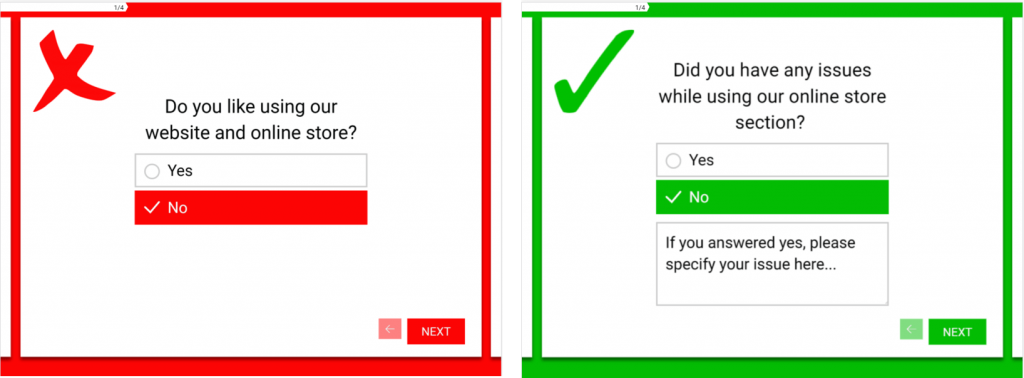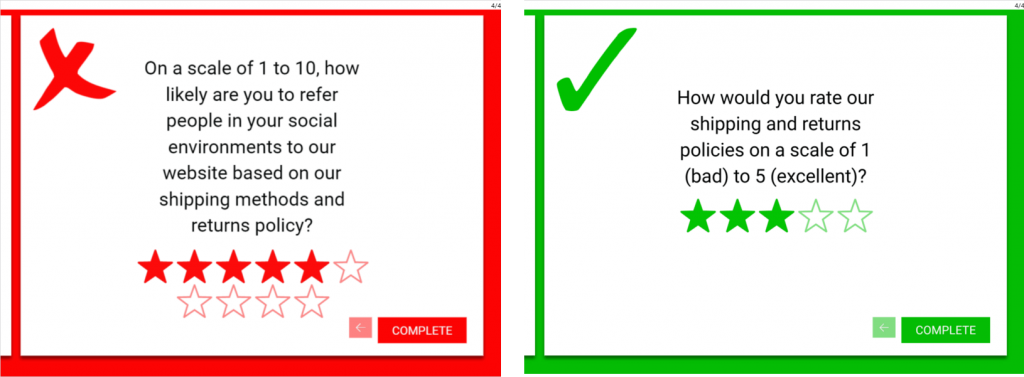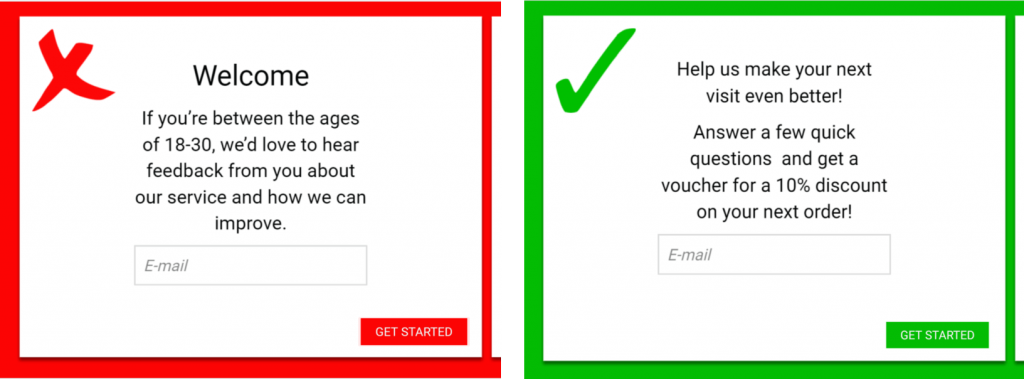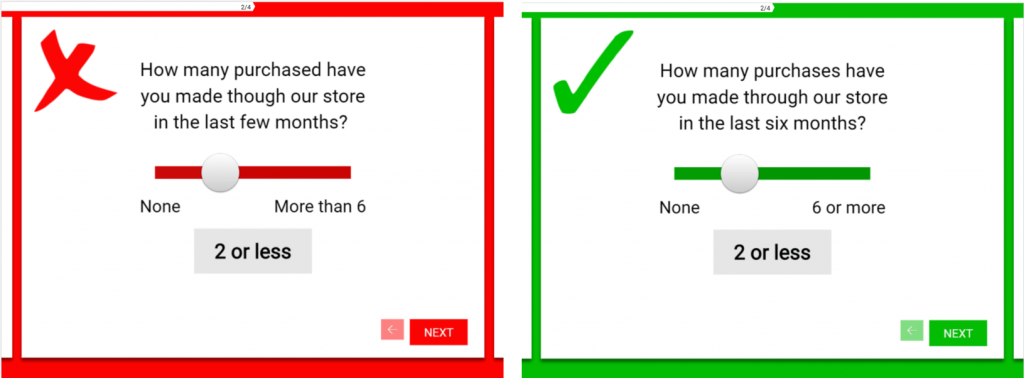
Writing a survey is one of the best ways to get information on your customers and your target market. Whether you’re trying to figure out the best way to sell your next product or service or looking for ways on how to improve your existing experience, a quick survey is all you need.
To help you create the perfect survey questions, here are 17 of the most common mistakes when creating surveys that you need to avoid!
In this article:
Before you can get the information you want from surveying your audience, you need a basic understanding of who they are and what they need. How are you supposed to write a survey if you don’t know who it’s for?
Conduct research to make sure you understand what kind of language your audience will respond to, what method of communication they prefer, and what their basic demographics are.
Following the consideration above, you need to provide a variety of answer options to give your customers. Many survey questions about your experience may be ‘yes’ or ‘no’ answers, but in some cases, and for more accurate results, ask respondents to elaborate on some of them.

Note: If the objective of your survey is to measure their maturity or performance in a specific domain, you should avoid open answers to elaborate on your questions.
Why? Because these answers are difficult to quantify. Rather define multiple answer options for your questions and attribute a score to each.To learn more about it, check out our blog article about how to develop a quantitative maturity model.
Creating a high-quality survey is essential for the return from your customers. If your customers are using a mobile device and they have to keep zooming in and out to answer questions properly, they’re going to have a bad experience, and they won’t fill it out and complete it.
Instead of spending your time trying to create your own, always remember that there are tools and services out there that can help. Online tools, such as Pointerpro, allow you to build comprehensive and authentic surveys that your users will positively respond to.
This comes alongside the first point in this article. When creating your survey, you need to use language that’s easy to understand, and your reader can skim read to pick out what answers they want to give.

You’ll need to invest time to examine your target audience to make sure that the words and sentence structure you’re using are perfect for your respondents. You can also use copywriting tools, such as Elite Assignment Help or Oxessays, to create user-friendly survey content on your behalf.
As a business, you might be trying to expand, and therefore you’ll want the input of other users that may not be your original target market. Define what kind of audience you want to attract and then cater your survey to suit their needs and requests. You may even want to offer an incentive to complete the survey.

Definitely a no-no – bad mouthing your competitors is something you don’t do. Why? Because it can hinder and bring damage to your own reputation. Being the bigger person gives a much better impression to leads or customers. When you speak negatively about the competition, you might appear to be jealous or fearful of them.
On top of that, you want your client to select you because they feel you best understand their situation and they see you as the best option.

It’s easy to fall into the trap of just posting generic survey questions, the sort of questions you think that you should be asking and that people will want to answer. However, it’s beneficial first to give your survey a purpose and then create it from there.
Simply ask yourself what you’re using the survey for and what kind of result you want. You may be looking to improve your customer service, your website experience or do some market research on your products and services. However, don’t try and fit it all into one survey. This is actually a very common survey mistake, make sure you give your questionnaire just one purpose.
This means you need to edit your questions after you’ve created them to ensure that it fits this message. You can also use this opportunity to check other parts of your writing, such as grammar. For editing tips and tricks, you can use tools like Big Assignments. For information on grammar, check out State of Writing.
You’ll need to remember that people are completing your surveys in their own time. The chances are that they’re not getting anything for it and they probably just don’t have anything better to be doing right then.
However, if you’re restricting progress in the survey because they need to answer all the questions, respondents will just abandon it. A few missed answers here, and there won’t harm your overall results, so let them be.
Just like the rest of the content your business uses, you need to make sure that your survey content is accurate and precise. If it’s full of mistakes, it will lose its credibility and most users will end up simply leaving it unfinished and you’ll have wasted time and money.

Instead, create your survey questions and work your way through it several times to make sure that it’s free from silly errors and mistakes. In fact, ask someone else to read it for you too!
You could also use a professional proofreading tool, such as Resumention, to guarantee accuracy. Apart from that, online survey-creation platforms help ensure that your survey is accurately made during development.